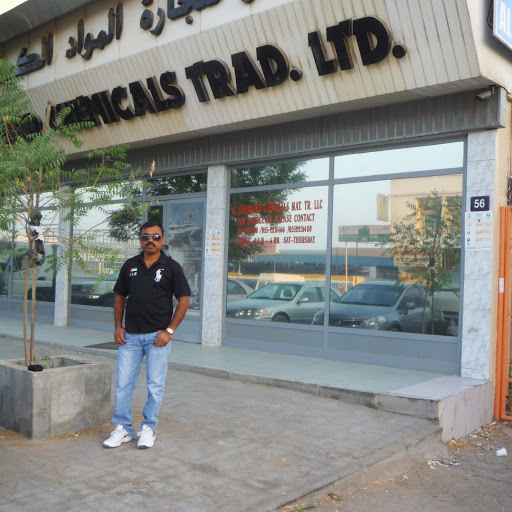Ranjit Kumar Roy
age ~76
from Baton Rouge, LA
- Also known as:
-
- Ranjit K Roy
- Ranjit R Roy
- Ranjit R Solanki
- Roy Kumar Ranjit
- Roy K Ranjit
- Phone and address:
-
12832 Woodshire Pl, Baton Rouge, LA 70816
(225)2925335
Ranjit Roy Phones & Addresses
- 12832 Woodshire Pl, Baton Rouge, LA 70816 • (225)2925335
- Las Vegas, NV
- Tuscaloosa, AL
- 12832 Woodshire Pl, Baton Rouge, LA 70816 • (225)2768911
Work
-
Position:Production Occupations
Emails
Isbn (Books And Publications)

Retrieving Bengal's Past: Society and Culture in the Nineteenth and Twentieth Century
view sourceAuthor
Ranjit Kumar Roy
ISBN #
8186438033


Resumes

Economic Evaluation Associate At Albemarle
view sourceLocation:
451 Florida St, Baton Rouge, LA 70801
Industry:
Chemicals
Work:
Albemarle Corporation 2005 - 2010
Economics Co-Ordinator
Albemarle Corporation Jan 1993 - Dec 2002
R and D Advisor
Albemarle Corporation Jan 1993 - Dec 2002
Economic Evaluation Associate at Albemarle
Economics Co-Ordinator
Albemarle Corporation Jan 1993 - Dec 2002
R and D Advisor
Albemarle Corporation Jan 1993 - Dec 2002
Economic Evaluation Associate at Albemarle
Education:
Louisiana State University 1978 - 1981
Master of Business Administration, Masters, Business Administration, Business University of Connecticut 1970 - 1973
Master of Science, Masters, Chemical Engineering
Master of Business Administration, Masters, Business Administration, Business University of Connecticut 1970 - 1973
Master of Science, Masters, Chemical Engineering
Skills:
Validation
Additives
Leadership
Polymers
Gmp
Polymer Chemistry
Chemistry
Coatings
Market Analysis
Plastics
Technology Transfer
New Business Development
Petrochemical
Process Simulation
Process Safety
Analytical Chemistry
Adhesives
Resin
Process Optimization
Materials Science
Polyurethane
Organic Chemistry
Additives
Leadership
Polymers
Gmp
Polymer Chemistry
Chemistry
Coatings
Market Analysis
Plastics
Technology Transfer
New Business Development
Petrochemical
Process Simulation
Process Safety
Analytical Chemistry
Adhesives
Resin
Process Optimization
Materials Science
Polyurethane
Organic Chemistry

Ranjit Roy
view source
Ranjit Roy
view source
Ranjit Roy
view source
Ranjit Roy
view sourceUs Patents
-
Process For Thermal Benzylic Bromination
view source -
US Patent:20030105350, Jun 5, 2003
-
Filed:Dec 5, 2001
-
Appl. No.:10/010404
-
Inventors:Max Mortensen - Bend OR, US
Hassan Elnagar - Baton Rouge LA, US
Ranjit Roy - Baton Rouge LA, US
Robert Allen - Baton Rouge LA, US
David Caillet - Baton Rouge LA, US -
International Classification:C07C211/56
C07C069/76
C07C017/06 -
US Classification:560/083000, 570/196000, 564/442000, 568/774000
-
Abstract:A process for thermal benzylic bromination of a wide variety of benzylic compounds is described. Bromine is used as the bromination agent. Moderate temperatures are employed and the process can be used to produce in relatively pure form either mono- or dibrominated benzylic bromination products.
-
Process For Preparing Bisimide Products
view source -
US Patent:52909450, Mar 1, 1994
-
Filed:Aug 11, 1992
-
Appl. No.:7/925446
-
Inventors:Ranjit K. Roy - Baton Rouge LA
Ali M. Dadgar - Baton Rouge LA
Donald O. Hutchinson - Baton Rouge LA
Keith G. Anderson - Baton Rouge LA -
Assignee:Ethyl Corporation - Richmond VA
-
International Classification:C07D40306
-
US Classification:548462
-
Abstract:This invention relates to a process for preparing a white bisimide product which principally contains N,N'-alkylene-bis(tetrabromophthalimide) or N,N'-bis(tetrabromophthalimide). The process features: providing, in a reaction vessel, a solution containing tetrabromophthalic anhydride and a solvent which contains at least about 15 weight percent of a mono-, di- or tri- carboxylic acid having a dissociation constant not higher than 1. times. 10. sup. -3 at 25. degree. C. ; forming a reaction mass by adding to the solution a diamine or a diamine salt formed by the partial or total diamine neutralization of a mono-, di- or tri- carboxylic acid having a dissociation constant not higher than 1. times. 10. sup. -3 at 25. degree. C. , such formation of the reaction mass resulting in the production of a bisimide precipitate which becomes a constituent of the reaction mass; during the formation of the reaction mass, (i) retaining, in the reaction mass, at least a portion of the water produced during such formation, (ii) maintaining a substantially constant pressure in the reaction vessel, and (iii) not allowing the temperature of the reaction mass to reach a temperature below about 135. degree. C. ; terminating the addition of the diamine or diamine salt when the molar ratio of the tetrabromophthalic anhydride initially present in the solution to the diamine or diamine salt added is from about 1.
-
Preparation Of Carboxylic Compounds And Their Derivatives
view source -
US Patent:60969202, Aug 1, 2000
-
Filed:Jul 8, 1998
-
Appl. No.:9/111935
-
Inventors:Robert H. Allen - Baton Rouge LA
R. Carl Herndon - Baton Rouge LA
Kannappan C. Chockalingam - Baton Rouge LA
W. Dirk Klobucar - Baton Rouge LA
Gary D. Focht - Baton Rouge LA
Tse-Chong Wu - Baton Rouge LA
Gary D. Heidebrecht - Orangeburg SC
Joseph D. McLean - Orangeburg SC
Yaping Zhong - Columbia SC
Thorsten W. Brockmann - Columbia SC
Ronny W. Lin - Baton Rouge LA
William J. Layman - Baton Rouge LA
Ranjit K. Roy - Baton Rouge LA -
Assignee:Albemarle Corporation - Richmond VA
-
International Classification:C07C 5110
-
US Classification:562406
-
Abstract:Palladium-catalyzed arylation of an olefin (e. g. , ethylene) with an aromatic halide (e. g. , 2-bromo-6-methoxynaphthalene, m-bromobenzophenone, or 4-isobutyl-1-bromobenzene) is conducted in specified media. After a special acid or base phase separation procedure, palladium-catalyzed carbonylation of the olefinically-substituted aromatic intermediate is conducted in specified media using CO and water or an alcohol to form arylalkylcarboxylic acid or ester or substituted arylalkylcarboxylic acid or ester (e. g. , racemic 2-(6-methoxy-2-naphthyl)propionic acid, 2-(3-benzoylphenyl)propionic acid, or 2-(4-isobutylphenyl)propionic acid). Catalyst recovery procedures enabling recycle of catalyst residues and efficient recovery of amine hydrogen halide scavenger and solvent used in the arylation reaction are described, as well as novel, highly efficient methods of conducting the carbonylation reaction. The technology is economical and suitable for use on an industrial scale whereby reaction mixtures can be efficiently separated into the desired component mixtures without need for excessive capital investment or tedious, time-consuming operations. High yields of high purity products can be achieved.
Myspace

Ranjit Roy
view sourceFlickr

Ranjit Roy
view sourceRanjit Roy Ranjit Roy ...

Ranjit Roy
view source
Ranjit Roy
view source
Roy Ranjit
view source
Ranjit Roy
view source
Ranjit Roy
view source
Ranjit Roy
view source
Ranjit Singha Roy
view sourcePlaxo

Ranjit K. Roy
view sourceOwner at Nutek, Inc.

ranjit roy
view sourceGurgaonEthosData
Classmates

Ranjit Roy, U CONN | Stor...
view sourceGoogleplus

Ranjit Roy

Ranjit Roy

Ranjit Roy

Ranjit Roy

Ranjit Roy

Ranjit Roy

Ranjit Roy

Ranjit Roy
Youtube
Get Report for Ranjit Kumar Roy from Baton Rouge, LA, age ~76








